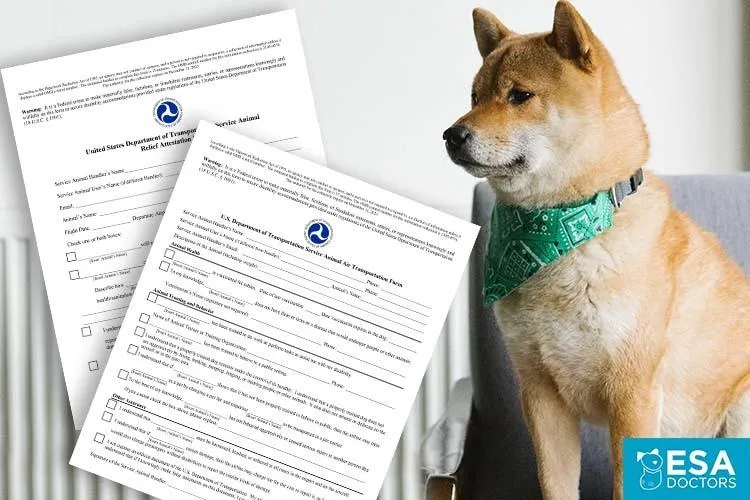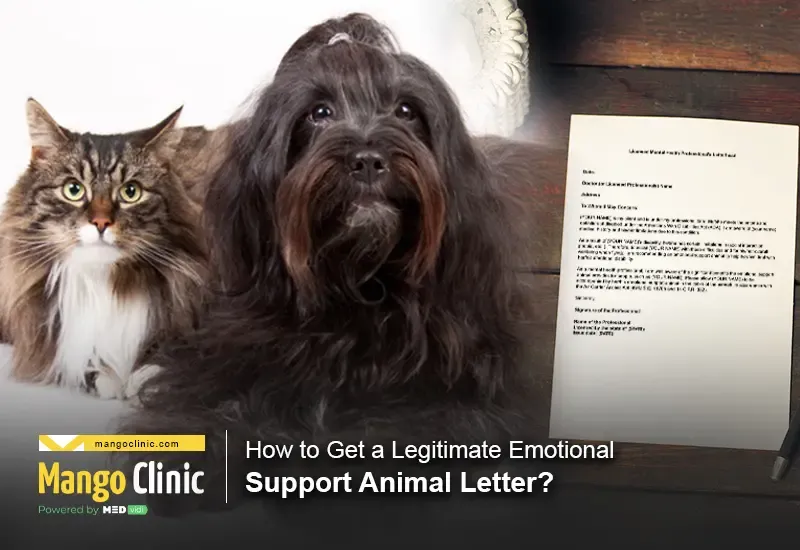Your Guide to Flying with Emotional Support Animals
Whether you have anxiety when traveling or simply feel more at ease with your pet by your side, traveling with an emotional support animal (ESA) can provide comfort. However, certain requirements must be met in order for your animal to accompany you in the cabin of an airplane. In this guide, I’ll explain everything you need to know about obtaining official ESA documentation and complying with airline policies.
What is an Emotional Support Animal?
An emotional support animal (ESA) is defined as an animal that provides therapeutic benefit to its owner through companionship. Unlike service animals, ESAs are not required to be trained to perform specific tasks. Their role is to simply be with their owners and help mitigate symptoms related to their handler’s mental health condition or disability, such as anxiety, depression, or PTSD.
For an animal to qualify as an ESA, a mental health professional must assess how the animal helps improve your condition and provide documentation of this – commonly referred to as an “ESA letter.” This letter should be renewed annually to ensure it remains current.
Obtaining an ESA Letter
To obtain an ESA letter, you’ll need an established relationship with a licensed mental health professional, such as a therapist, psychologist, psychiatrist, or other medical doctor. During an appointment, you’ll discuss how your condition impacts daily life and how your pet provides support. From my experience working with patients, it’s important to be honest about the symptoms you experience and ways your animal has helped calmed anxieties in the past.

If the medical professional determines your animal is necessary for your treatment, they will likely draft a letter on their professional letterhead specifying your diagnosis, that you are under their care, and how the ESA helps mitigate symptoms associated with your disability. The letter should not make recommendations about housing rights or discuss flying with your ESA, as those are handled separately under federal law.
Airline Policies for ESAs
While ESAs are not considered service animals, the Department of Transportation (DOT) requires airlines to permit properly-documented ESAs to accompany passengers with disabilities in aircraft cabins at no extra charge beyond regular pet fees. However, each carrier sets their own policies, so it’s important to check directly with the airline you’ll be flying about what is required.
- ESA Documentation: All airlines will require valid paperwork from a licensed mental health professional referring to your need for an ESA no older than one year. Documentation cannot be provided by online certifications or the patient themselves.
- Advance Notification: Most airlines require 2-4 weeks’ notice that you’ll be flying with an ESA, so be sure to plan ahead. Some allow last-minute notification for emergencies.
- Vaccination/Health Records: Proof of current vaccinations is usually expected. Many airlines also require ESA be at least 4 months old.
- ESA Behavior: Aggressive or disruptive animals may be denied passage. ESAs must remain under control on leash/harness at all times.
- Cabin-Approved Animal: Only domesticated dogs, cats and miniature horses are allowed as ESAs on planes. No reptiles, rodents, birds or exotic pets.
Common ESA Documentation Mistakes
One of the biggest problems passengers face is invalid or insufficient ESA documentation. From my experience working in mental healthcare, here are some red flags to watch out for:
- Letters supplied by online companies or “ESA registry” sites, as these lack oversight from a legitimate medical professional.
- Letters written by the patient themselves or family members rather than a licensed third party.
- Letters that don’t specify your diagnosis or mental health condition requiring ESA treatment.
- Letters older than one year in age, as most airlines require annual renewal of paperwork.
- Letters recommending or demanding the airline allow your ESA rather than simply stating your need for the animal.
If any part of the documentation seems vague, truncated or unjustified, airlines have grounds to deny your ESA’s passage. It’s important the letter clearly establishes your disability and prescribed need for an animal to alleviate symptoms.

Preparing for Your Flight
Once you’ve confirmed your ESA letter is valid and notified the airline, it’s time to gear up for your trip. Use this checklist to help things go smoothly:
- Purchase an ESA vest, leash or harness identifying your pet as an emotional support animal.
- Pack medications, bowls and other supplies in approved carry-on size bags only.
- Consider bringing a plastic bag and paper towels for accidents, plus a training pad just in case.
- Bring copies of vaccination records and ESA letter in carry-on in case requested.
- Acclimate your animal to their carrier prior to the flight for a calmer trip.
- Be respectful of others in enclosed airplane cabins and keep your ESA well-behaved.
Final Thoughts
With correct planning and official documentation, flying with an ESA is meant to be a straightforward process. However, it’s important to thoroughly research each airline’s specific rules well in advance. And don’t forget that proper animal hygiene and conduct is key to avoiding complaints from other passengers. With preparation and care for your pet, an ESA can be a comforting travel companion to ease anxiety.
If you have any other questions about obtaining an ESA letter or the documentation process, don’t hesitate to discuss with your qualified mental healthcare provider. Wishing you and your emotional support animal safe and stress-free travels whenever you fly together!
Essential Facts About Emotional Support Animal Letters
| Detail | Description |
|---|---|
| Purpose of the Letter | Confirms you have a disability and your animal provides emotional support |
| Provider Requirements | Must be issued by a licensed mental health professional (therapist, psychologist, psychiatrist, etc.) who has an established client relationship with you |
| Animal Requirements | The animal must be well-behaved and able to remain on the floor at your feet or on your lap. It cannot show any signs of aggression. |
| Time Valid | An ESA letter is valid for 1 year from the date issued. You should obtain an updated one annually. |
| Airline Policies | Most major airlines accept ESAs in the cabin with their owners. Advanced notice and paperwork is required. |
FAQ
-
What’s an emotional support animal letter?
An emotional support animal letter is basically a doc from a healthcare pro that says a person needs an emotional support animal (ESA) for their mental well-being. It allows the person to live with their pet in housing that usually bans animals.

-
Who needs an emotional support animal letter?
People who have mental health issues like depression, anxiety or PTSD may need an ESA letter. The animal kinda helps them cope. Some signs you may need one is if being with your pet eases your symptoms. But some question if getting a letter is always necessary?
-
What animals qualify as emotional support animals?
Most pets can be emotional support animals. Dogs are common but cats, rabbits, even pigs may help. As crazy as it seems, some say pet snakes and spiders also provide emotional support! According to experts, what matters most is the bond between patient and pet despite it appearing odd.
-
Do I need special training for my emotional support animal?
No special training is necessary. An ESA just has to provide comfort and support. Unlike service animals, they aren’t required to do tasks and you don’t have to take them everywhere. However, the animal still needs to be well-behaved in public as representing mental health. So it’s a good idea to do basic obedience training.
-
Where can I take my emotional support animal?
With the right letter or documentation, you can take your ESA anywhere housing is involved like apartments, dorms, and planes at no pet fee. Oddly enough,emotional support animals aren’t allowed in most restaurants, stores, parks or venues where health codes apply. Go figure! But is that fair?

-
How much does an emotional support animal letter cost?
Price varies, but averages $50-150. Some pros charge less while “ESA registry” sites scamming folks charge way more. Remember, the letter alone doesn’t make an animal an ESA – there must be a true disability. Maybe spending excess money symbolizes a person has found comfort and is willing to show gratitude? Or possibly they just want to feel they got their money’s worth!
